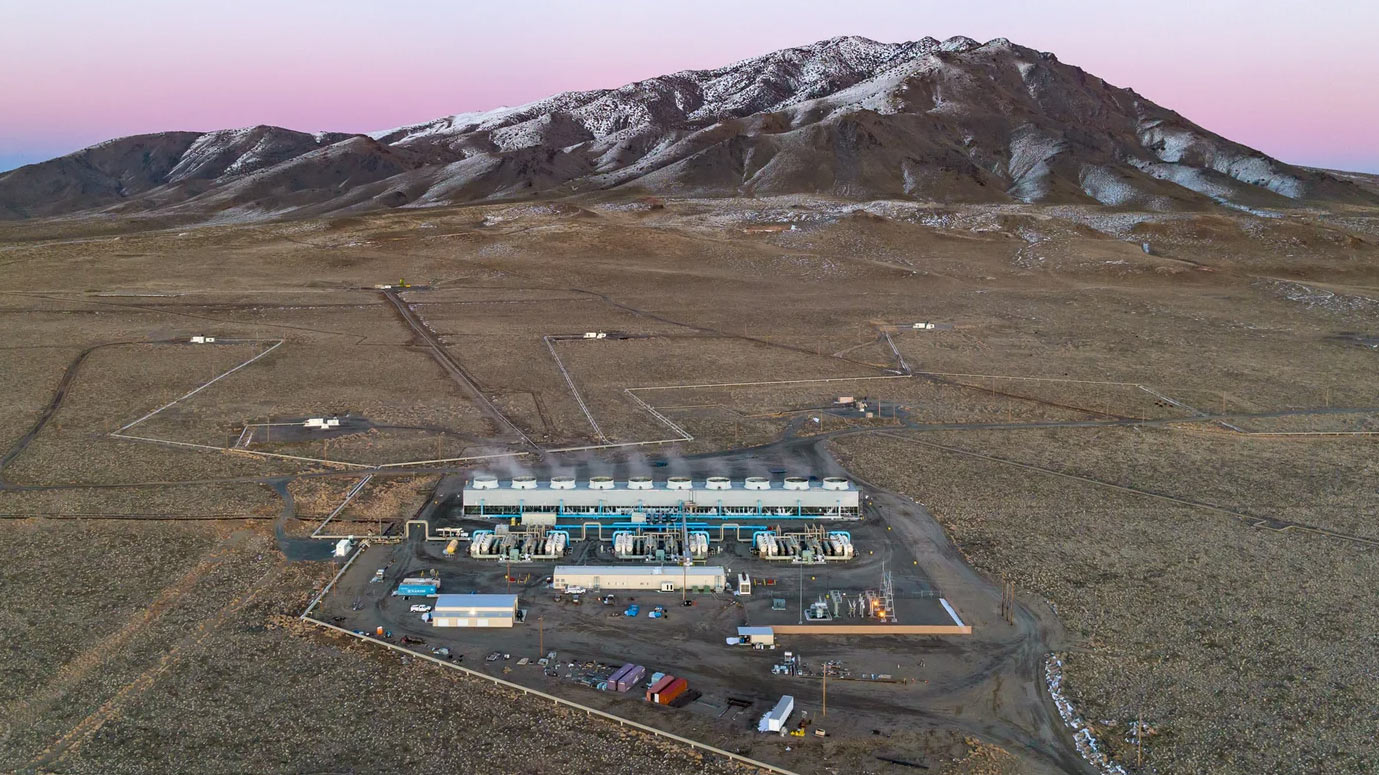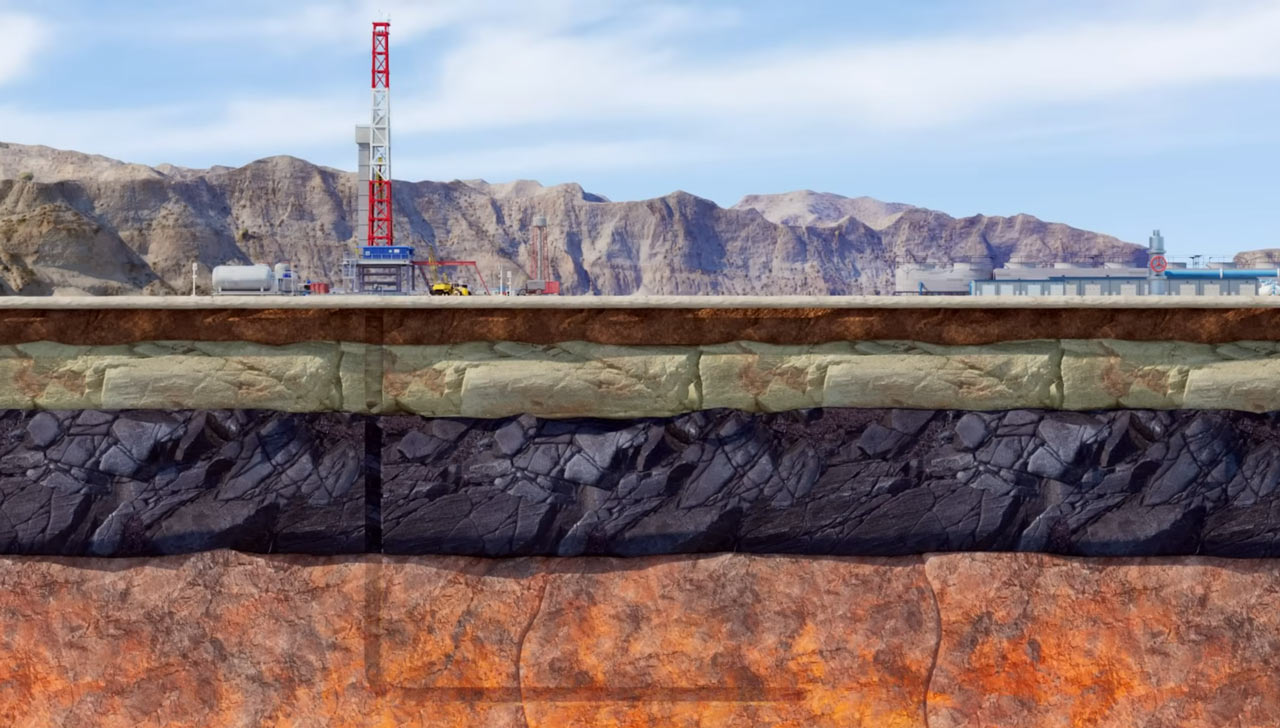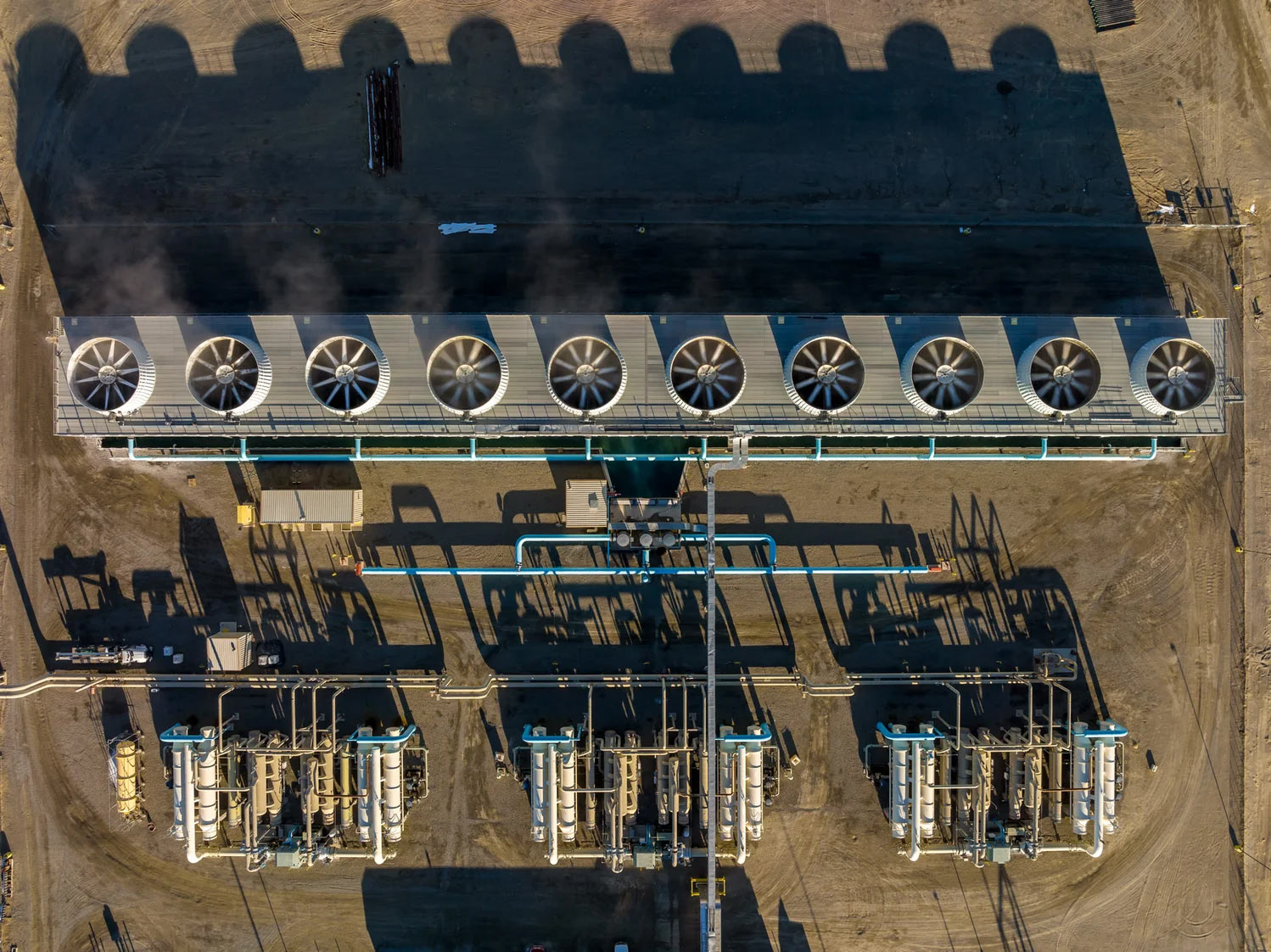Google now powering data centers with geothermal energy harvested using oil drilling techniques
Geothermal project is supplying Google data centers with clean energy as of today

Google has a new way to power its data centers. According to a blog post from Google, a "first-of-its-kind" geothermal project in Arizona that uses modern oil and gas industry drilling techniques to optimize geothermal power generation is operational, as of today. Google says this "enhanced geothermal energy" is capable of producing round-the-clock clean energy cheaper than any other currently available method.
Power is a big expense for most tech companies, and is an increasingly precious resource in general. So it tracks that companies are pursuing ambitious clean energy and renewable energy targets. Until now, geothermal energy production has been geographically limited because it relied on the Earth's heat sources being concentrated and very near the surface. But Google has been working closely for the last two years with a company called Fervo, and the pair have managed to set up a power plant that will fulfill data centers with clean energy 24/7.
Fervo’s technology makes many more underground heat sources viable for energy production purposes. Google says the main difference is that Fervo has been using the latest horizontal drilling technologies from the oil and gas industries to efficiently tap into geothermal sources.

In the case of this successful Nevada project, Fervo drilled pilot wells 8,000 feet deep before turning to horizontal drilling techniques. It then ran fiber optic cables down the wells to gather and analyze data concerning the flow and temperature profile of the local geothermal resource. It implemented a well design to maximize the use of the best heat resources identified and to optimize the flow of the heat reservoir system for heat mining efficiency. You can read more about Fervo and its technologies on its website, or watch the following video:
The US Department of Energy predicts that geothermal energy could provide up to 120 gigawatts of reliable generation capacity in the US by 2050. This means it could account for 16% of the nation’s energy demands by that time. Perhaps with the Google and Fervo Arizona project success, those figures might be worth revising. If it isn’t already clear, these ‘24/7’ geothermal power plants have an inherent advantage over renewable like wind, sea, solar, and hydroelectric energy, which aren’t as dependable or consistent.

The collaboration with Fervo isn’t the first of Google’s geothermal projects to be announced. Back in September, it made public a partnership with the non-profit organization Project InnerSpace, which seeks to popularize geothermal energy production worldwide.
Google hopes that projects like this geothermal power plant in Arizona will help it progress toward its goal of operating all its data centers and office campuses on 24/7 carbon-free energy (CFE) by 2030. Ultimately, technology like this could also help decarbonize the world's electricity production.
Stay On the Cutting Edge: Get the Tom's Hardware Newsletter
Get Tom's Hardware's best news and in-depth reviews, straight to your inbox.

Mark Tyson is a news editor at Tom's Hardware. He enjoys covering the full breadth of PC tech; from business and semiconductor design to products approaching the edge of reason.
-
bit_user Good. Now start building data centers around dormant supervolcanos, so we can defuse these lurking monsters by sapping away their heat.Reply
https://www.bbc.com/future/article/20170817-nasas-ambitious-plan-to-save-earth-from-a-supervolcano
The eruption of a large supervolcano would have climatic effects on par with an asteroid impact, possibly ushering in a mini ice age. Food production would be severely affected, triggering years of mass starvation. They're an existential threat to modern civilization.
https://www.usgs.gov/faqs/what-a-supervolcano-what-a-supereruption
https://en.wikipedia.org/wiki/Supervolcano
amirite, @Kamen Rider Blade ? -
USAFRet Reply
Mosquito on an elephant.bit_user said:Good. Now start building data centers around dormant supervolcanos, so we can defuse these lurking monsters by sapping away their heat. -
bit_user Reply
I've read you can drain enough heat, over like 100 years, to probably defuse one. Not with a single tap, but probably a dozen or so.USAFRet said:Mosquito on an elephant.
The key is that you don't need to drain all of its heat, but just enough that it stops weakening the crust.
It's a win-win: nearly free, limitless power and meaningful reduction of a civilization-level risk. -
USAFRet Reply
I didn't see anything in there about "100 years".bit_user said:I've read you can drain enough heat, over like 100 years, to probably defuse one. Not with a single tap, but probably a dozen or so.
The key is that you don't need to drain all of its heat, but just enough that it stops weakening the crust.
It's a win-win: nearly free, limitless power and meaningful reduction of a civilization-level risk. -
bit_user Reply
Yeah, it was a different article. I'll post if I can find it.USAFRet said:I didn't see anything in there about "100 years". -
Kamen Rider Blade Reply
The threat is true, but good luck getting Data Centers to willingly move there.bit_user said:Good. Now start building data centers around dormant supervolcanos, so we can defuse these lurking monsters by sapping away their heat.
https://www.bbc.com/future/article/20170817-nasas-ambitious-plan-to-save-earth-from-a-supervolcano
The eruption of a large supervolcano would have climatic effects on par with an asteroid impact, possibly ushering in a mini ice age. Food production would be severely affected, triggering years of mass starvation. They're an existential threat to modern civilization.
https://www.usgs.gov/faqs/what-a-supervolcano-what-a-supereruptionhttps://en.wikipedia.org/wiki/Supervolcano
amirite, @Kamen Rider Blade ?
How do you know how many GeoThermal plants are necessary to drain the heat at a region to maintain stability of the crust over time? How do you even validate such claims?
And who's going to pay for this? -
USAFRet Reply
Also, where is that "heat" going?bit_user said:Now start building data centers around dormant supervolcanos, so we can defuse these lurking monsters by sapping away their heat.
Consider the Earth as a closed ecosystem. Planet and atmosphere.
Sapping the heat from a volcano goes....where? -
bit_user Reply
The only place it can - up. At least, if there are no large bodies of water nearby...USAFRet said:Also, where is that "heat" going?
https://www.tomshardware.com/desktops/servers/china-has-started-building-an-underwater-data-center-performance-is-equivalent-to-6-million-pcs-and-aims-to-save-nearly-ten-soccer-fields-of-land-and-122-million-kwh-of-electricity
Energy-wise, it's not. Energy enters from the sun, which is why the temperature usually rises during the daytime. Energy is then radiated out into space (at least, the portion which isn't trapped by the greenhouse effect), enabling temperatures to drop at night.USAFRet said:Consider the Earth as a closed ecosystem. Planet and atmosphere.
If the volcano erupted, that heat would come out with the magma. I don't really see the problem.USAFRet said:Sapping the heat from a volcano goes....where? -
bit_user Reply
Well, you can estimate the size of the magma plumes using seismographic techniques and via changes in gravity.Kamen Rider Blade said:How do you know how many GeoThermal plants are necessary to drain the heat at a region to maintain stability of the crust over time? How do you even validate such claims?
I assume we have a pretty good idea how hot the magma is and at what temperature the crust weakens. That should establish a target for the amount of energy that needs to be extracted.
As the BBC article I linked says, it'll pay for itself in cheap energy-generation, over time. It requires some up-front investment, but so did Google's geothermal power system described in the Toms article.Kamen Rider Blade said:And who's going to pay for this? -
USAFRet Reply
To significantly impact the heat in this volcano, we'd be pumping significant extra heat into the atmosphere.bit_user said:The only place it can - up. At least, if there are no large bodies of water nearby...
https://www.tomshardware.com/desktops/servers/china-has-started-building-an-underwater-data-center-performance-is-equivalent-to-6-million-pcs-and-aims-to-save-nearly-ten-soccer-fields-of-land-and-122-million-kwh-of-electricity
Energy-wise, it's not. Energy enters from the sun, which is why the temperature usually rises during the daytime. Energy is then radiated out into space (at least, the portion which isn't trapped by the greenhouse effect), enabling temperatures to drop at night.
If the volcano erupted, that heat would come out with the magma. I don't really see the problem.
Unintended consequences rear their ugly heads.
It is going to blow? Absolutely. Eventually.
With really really bad consequences for us out here.
But us puny humans manually siphoning that off over the next "100 years" may or may not be a good idea. It is not a slam dunk good.